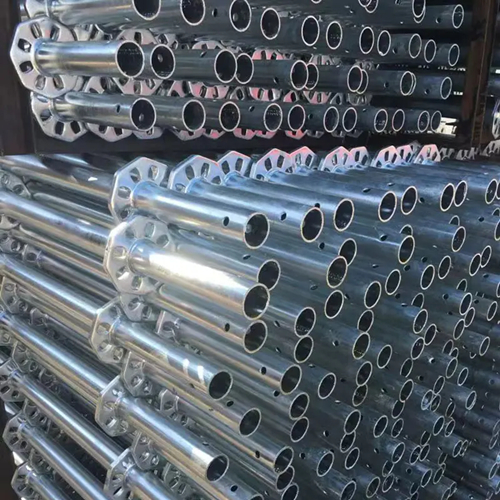What are the Advantages of Octagonal Scaffolding Compared to Other Types?
Octagonal scaffolding has several advantages over other types of scaffolding:
Enhanced Stability
Even Load Distribution: The octagonal shape provides a more even distribution of weight compared to some other shapes. With eight contact points on the ground or supporting surface, it can better handle loads and is less likely to tip over. For example, in a construction site with a lot of movement of workers and equipment, the octagonal scaffolding can maintain its balance more effectively.
Lateral Stability: The multiple angles and sides of the octagonal structure allow for better resistance against lateral forces such as wind or impacts. Diagonal braces in an octagonal scaffolding system can form more stable triangular configurations, which enhance the overall torsional rigidity and lateral stability of the structure. This is particularly beneficial when the scaffolding is used at heights or in exposed outdoor locations.
Space-Efficient Design
Interior Space Utilization: The octagonal shape offers a more rounded interior space that can be more efficiently utilized. It provides more room for workers to move around and for storing tools and materials compared to some other shapes. For instance, when working on a project that requires a lot of equipment to be kept on the scaffolding, the octagonal design allows for better organization and access.
Adaptability to Work Area: Octagonal scaffolding can fit more snugly into certain work areas. Its rounded corners make it easier to position in areas with irregular shapes or close to curved structures. This can be an advantage in restoration projects of historical buildings with unique architectural features or in industrial settings where the scaffolding needs to be placed near circular equipment or structures.
Aesthetic and Visual Appeal in Some Applications
Blending with Architecture: In some cases, such as the restoration of historical or architecturally significant buildings, the octagonal shape of the scaffolding can be more visually appealing and harmonious with the building's design. It can give a more organized and geometric look compared to other scaffolding shapes, especially when the scaffolding is visible for an extended period.
Versatility in Design: The octagonal shape allows for more creative and aesthetically pleasing arrangements when used in events, exhibitions, or stage setups. It can provide a unique and eye - catching appearance, which can be an advantage in the entertainment and event industries.
Customizability and Modularity
Easy Assembly and Disassembly: Octagonal scaffolding is usually designed with a modular structure, similar to other scaffolding types. However, its components can be more easily adjusted and customized to fit different project requirements. The eight - sided geometry allows for a variety of connection options and configurations, enabling contractors to build the scaffolding to the exact height, width, and shape needed for a specific job.
Reusability and Adaptability: The modular nature of octagonal scaffolding makes it highly reusable for different projects. The components can be easily disassembled, transported, and then reassembled in a different configuration, which can lead to cost savings over time and greater flexibility in usage.

评论
发表评论